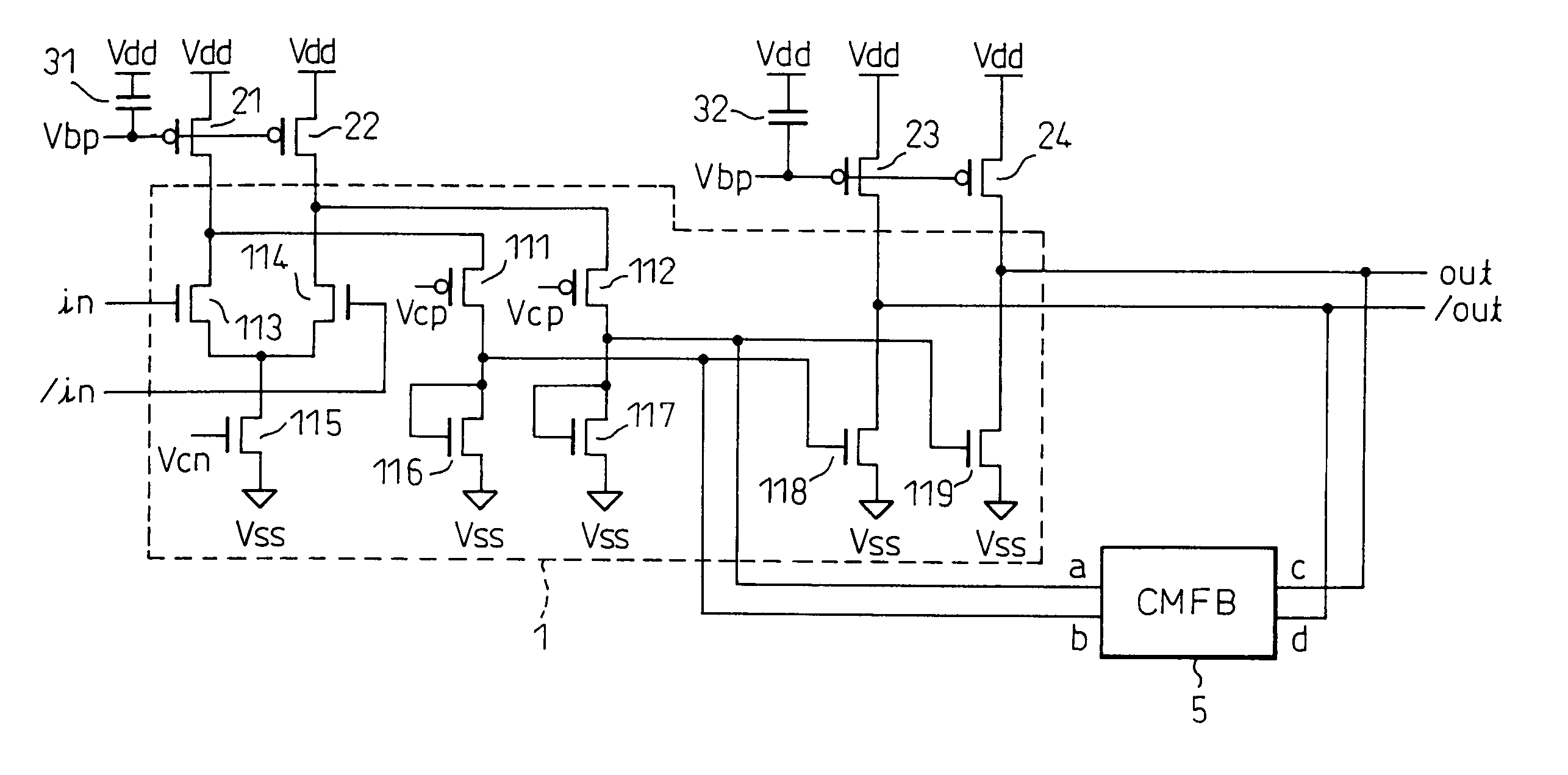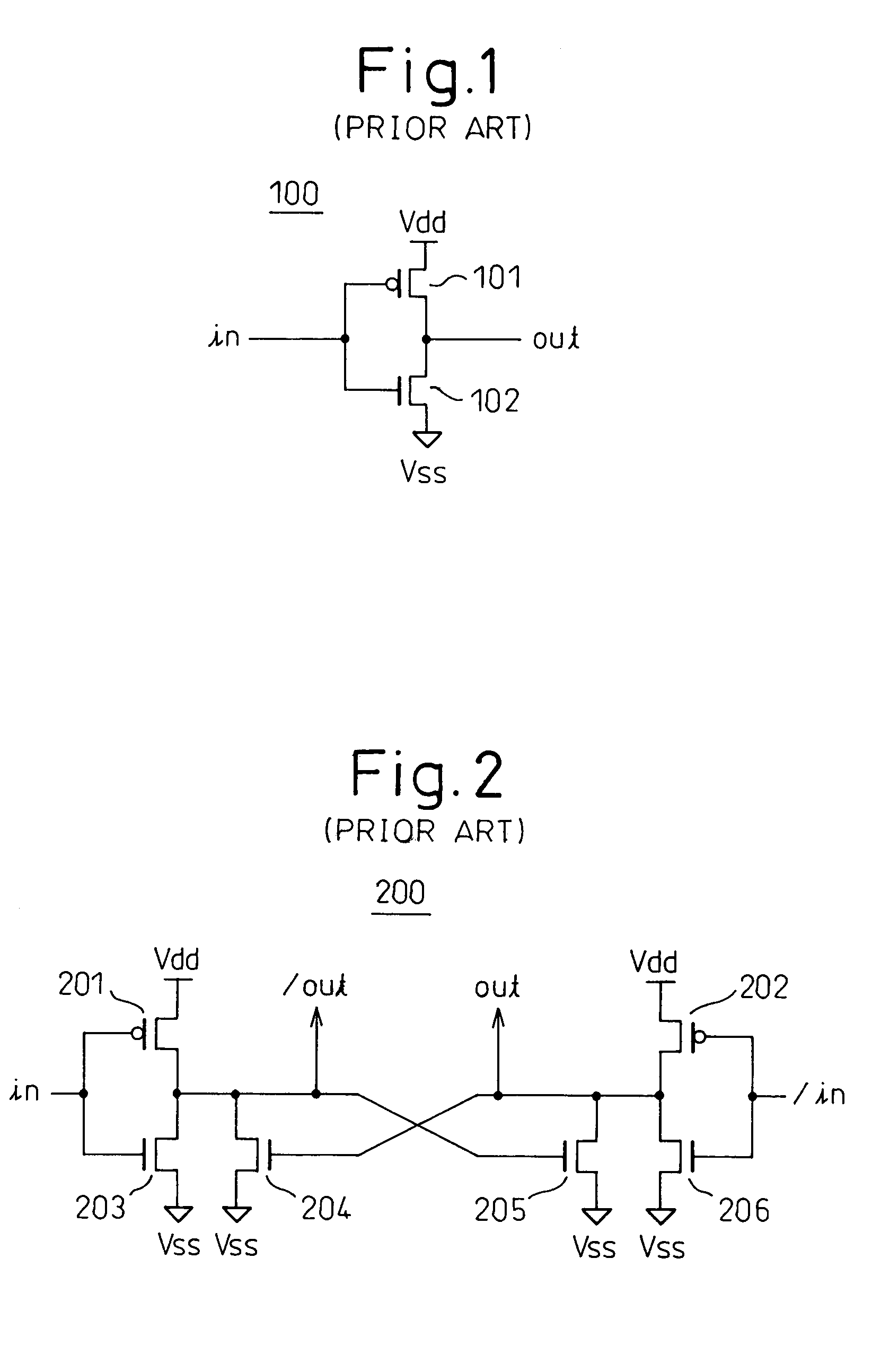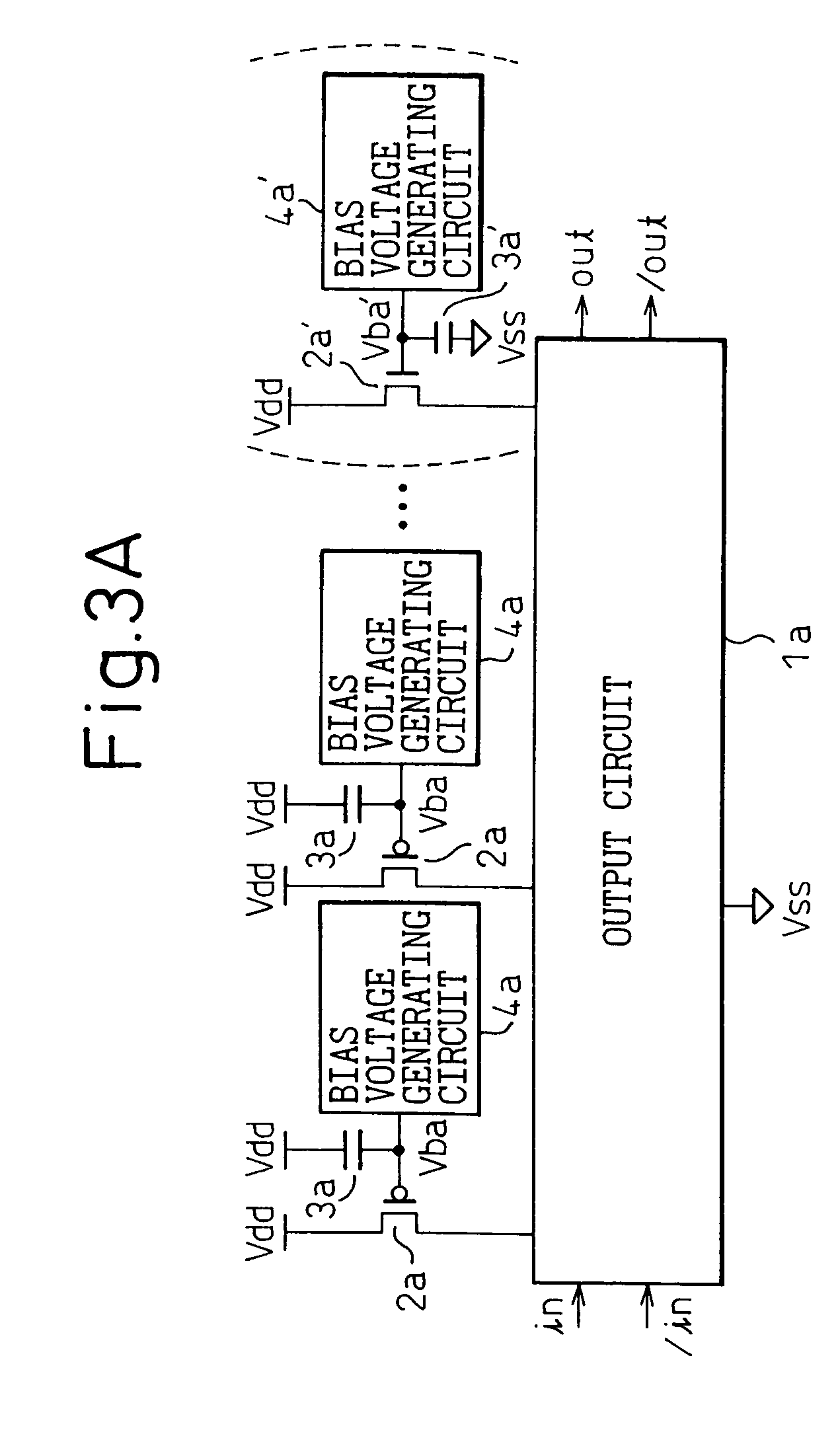Output circuit device for clock signal distribution in high-speed signal transmission
a clock signal and output circuit technology, applied in the field of signal transmission technology, can solve the problems of affecting the speed gap has been becoming a bottleneck in the performance of the computer, and the speed of signal transmission between the peripheral device and the processor/chipset is also becoming a major factor limiting the overall performance of the system, so as to minimize the occurrence of jitter, the effect of accurate timing and high speed
- Summary
- Abstract
- Description
- Claims
- Application Information
AI Technical Summary
Benefits of technology
Problems solved by technology
Method used
Image
Examples
first embodiment
[0078]FIG. 6 is a block circuit diagram schematically showing the output circuit device according to the present invention. In FIG. 6, reference numeral 1 is a circuit proper (output circuit), 21 to 24 are isolating PMOS transistors, 31 and 32 are capacitors, and 5 is a common-mode feedback (CMFB) circuit.
[0079]In the circuit proper 1, input signals (input clocks) in and / in are received by an input amplifier circuit comprising an nMOS transistor differential pair 113, 114; the input signals are then transferred via pMOS transistors 111, 112 and nMOS transistors 116, 117, respectively, and output signals (output clocks) out and / out are produced via an output stage amplifier comprising nMOS transistors 118 and 119 respectively connected to the transistors 116 and 117 in a current-mirror configuration. Here, the transistors 111 and 112 are supplied at their gates with a constant voltage Vcp which is lower than the drain potential of the transistors 21 and 22 by a value not smaller than...
second embodiment
[0085]FIG. 8 is a circuit diagram schematically showing the output circuit device according to the present invention.
[0086]As shown in FIG. 8, in the output circuit device of the second embodiment, the differential input signals in and / in are supplied to the gates of transistors 121, 123 and transistors 122, 125, respectively, each transistor pair forming a push-pull circuit (inverter). The common source of the pMOS transistors 121 and 122 is connected to the high-level power supply line (Vdd) via an isolating pMOS transistor 20 and a low-pass filter circuit 6, and the gate of the transistor 20 is connected to the drain of a pMOS transistor 61 (the source of the transistor 20) via a capacitor 30. Here, the transistor 20 and the capacitor 30 correspond to the transistor 2a and the capacitor 3a, respectively, previously shown in FIG. 3A. In the second embodiment, however, the capacitor 30, one terminal of which is connected to the gate of the transistor 20, has its other terminal conn...
third embodiment
[0090]FIG. 9 is a circuit diagram schematically showing the output circuit device according to the present invention.
[0091]As is apparent from a comparison between FIG. 9 and FIG. 8, in the output circuit device of the third embodiment, a resistor (filter resistor) 63 is used in place of the pMOS transistor 61 in the low-pass filter circuit 6. Otherwise, the configuration is the same as that of the second embodiment shown in FIG. 8.
PUM
 Login to View More
Login to View More Abstract
Description
Claims
Application Information
 Login to View More
Login to View More - R&D
- Intellectual Property
- Life Sciences
- Materials
- Tech Scout
- Unparalleled Data Quality
- Higher Quality Content
- 60% Fewer Hallucinations
Browse by: Latest US Patents, China's latest patents, Technical Efficacy Thesaurus, Application Domain, Technology Topic, Popular Technical Reports.
© 2025 PatSnap. All rights reserved.Legal|Privacy policy|Modern Slavery Act Transparency Statement|Sitemap|About US| Contact US: help@patsnap.com



